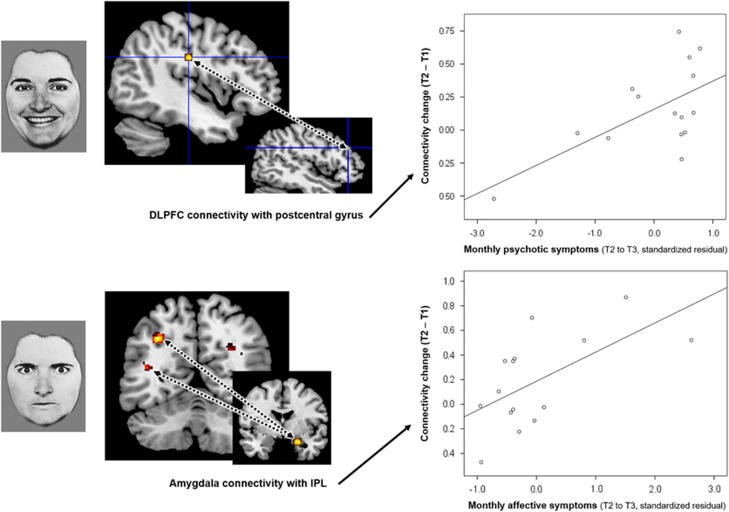Figure 1.
Following cognitive behavioural therapy for psychosis, the change in specific social-affect functional connections differentially predicts level of positive psychotic symptoms (top) and affective symptoms (bottom) across eight years. Top: the increase in connectivity between dorsolateral prefrontal cortex (DLPFC) and postcentral gyrus when processing prosocial facial affect predicted reduced levels of positive psychotic symptoms (rρ(15)=0.495, P=0.06). Bottom: conversely, the increase in amygdala connectivity with the inferior parietal lobule (IPL) when processing social threat predicted reduced levels of affective symptoms (rρ(15)=0.49, P=0.06). Dotted lines between brain regions represent connectivity.

